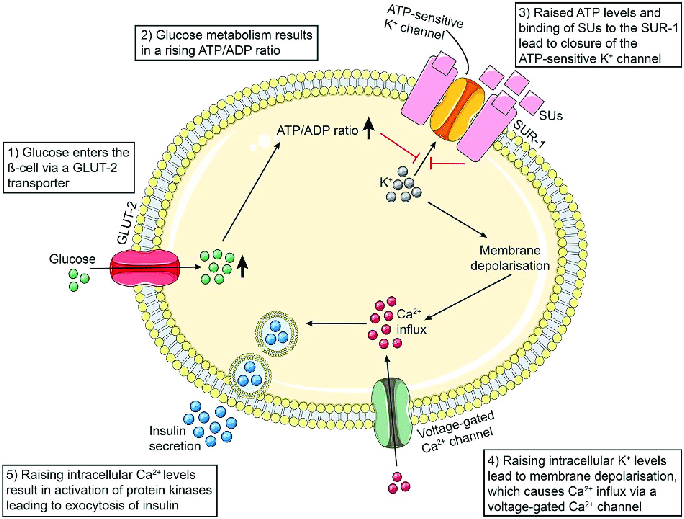Classification of Anti-diabetic Agents
Sulphonylureas: first-generation drugs - tolbutamide and chlorpropamide, and second-generation drugs like, glipizide,
Biguanides: The most common example is metformin
Meglitinides: Examples include repaglinide
Thiazolidinediones: Examples include rosiglitazone
Alpha-glucosidase inhibitors: Examples include acarbose.
Dipeptidyl peptidase-4 (DPP-4) inhibitors: An example is sitagliptin.
Glucagon-like peptide (GLP-1) analogues: An example is exenatide.
Insulin: A hormone that regulates blood glucose by stimulating its uptake into cells and inhibiting its production by the liver.
- Short Acting: Regular, Lispro, Insulin zinc
- Intermediate Acting: Isophane (NPH)
- Longer Acting: Protamine zinc
Example of 2nd Generation sulfonylurea Antidiabetic Agent is Glipizide.
Structure
MOA
It is a class of Sulfonylurea drugs
(1) They act on the so-called ‘sulfonylurea receptors’ (SUR1) on the pancreatic β cell membrane.
(2) This action causes depolarization by reducing the conductance of ATP-sensitive K+ channels. (Raised ATP production followed by raised Glucose also reduces the conductance of ATP sensitive K+ Channels)
(3) This process enhances Ca2+ influx (Followed by the stimulation of Voltage sensitive Ca++ Channel) and degranulation (followed by calcium dependent translocation), which increases the rate of insulin secretion.
Uses
- To treat high blood sugar levels caused by type 2 diabetes mellitus
- To prevent or delay the complications of diabetes, such as heart disease, kidney disease, nerve damage, and eye problems
- To test the function of the pancreas in diagnosing diabetes or other conditions





Comments
Post a Comment